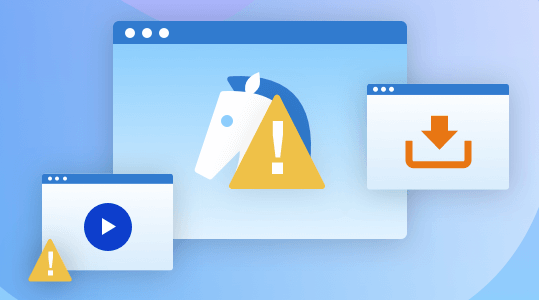Amnesia is a malicious program, classified as a stealer trojan. It’s a very dangerous infection with variants for both Windows and Android devices. The reason it falls into the stealer trojan category is because its main purpose is to steal as much information as possible from infected devices. What’s more, it also behaves as a Remote Access Trojan (RAT), which means infected devices may be remotely accessed by malware operators.
The Amnesia stealer trojan has many alarming features, including stealing highly sensitive information.
Immediately upon being initiated, the trojan collects all relevant device information. It then proceeds to extract data from browsers, including browsing histories, stored passwords, Internet cookies, auto-fills (usernames, phone numbers, etc.), and even stored payment card data. The trojan also appears to target gaming platforms, such as Epic Games, Playstation, Steam, Xbox, etc.
Amnesia stealer trojan also targets messaging platforms, including Messenger, Discord, WhatsApp, and Telegram, as well as cryptocurrency wallets such as Binance, Coinbase, MetaMask, etc.
In addition to acting as a stealer trojan, Amnesia also has spyware features and operates as a Remote Access Trojan (RAT). The malware can take screenshots, steal files, and give its operators remote access to the infected device. It can also behave as a keylogger, which means operators would steal all that you type. Furthermore, the malware has crypto-mining features, so it will use your device’s resources to mine cryptocurrencies like Monero, and Ethereum Classic. To steal your funds, the malware can also replace the crypto wallet address you copy-paste to reroute your transactions to the malware operators’ wallets.
Because of its extensive features, the Amnesia stealer trojan is considered to be a very serious malware infection. The only way to detect and remove Amnesia stealer is to use an anti-malware program.
How to protect your devices from malware
Users with good browsing habits are considerably less likely to infect their devices with malware. It’s strongly recommended to develop better habits, as well as become familiar with the most common malware infection methods, both on Windows and Android devices. Carefully read the following to avoid malware in the future.
Research apps before downloading
Before installing an app on your Android device, carefully research them. You should always check the developer, read reviews, inspect permission requests, etc. This applies to apps available on the Google Play Store as well.
Use legitimate stores/platforms to download apps
It’s best to use trusted and official app stores such as the Google Play Store for apps. Third-party app stores are often not well-regulated, which makes it easier for malicious actors to upload harmful apps disguised as legitimate ones. The Google Play Store is the safest option for downloading apps as it has multiple security measures in place to prevent malware. While it’s still possible for some malware to slip through Google’s security, it’s a rare occurrence, especially when compared to third-party app stores.
Always carefully review requested permissions
One effective way to protect your Android device from infections is to carefully check the permissions requested by apps before granting them. When you install an app, it asks for various permissions to function correctly. It’s crucial to be cautious when reviewing these permissions and consider why apps need the permissions they request. For instance, if a game asks for access to your messages or to make calls, do not grant that permission.
Keep the device up-to-date
It’s important to keep all devices up to date and install updates as they come out. Updates patch known vulnerabilities, which could be used by malicious actors so it is essential to install them.
Do not click on unknown links or open unsolicited email attachments
Always be cautious when it comes to unknown links and unsolicited email attachments. This advice is important for all users, regardless of the device they’re using. Exercise caution with unsolicited SMS, emails, and messages containing links or attachments. Keep in mind that government agencies, banks, and other institutions do not send SMS messages or emails with links. Avoid clicking on unknown links and always double-check unsolicited email attachments before opening them, such as by scanning them with an anti-virus program or VirusTotal.
Have an anti-virus program installed and monitoring your computer at all times
Having a good anti-malware program installed on your device is essential if you want to protect your device from malware. Real-time protection will prevent malicious infections from being able to enter a device if you unknowingly do something that would lead to an infection.
Remove Amnesia stealer
Because this trojan is a serious malware infection, you need to use an anti-virus program to remove Amnesia stealer trojan. Both Android and Windows versions are detected by most anti-virus programs/apps, including:
Windows:
- Trojan.Inject.BFD by BitDefender
- Other:Malware-gen [Trj] by Avast
- Trojan.Win32.Reconyc.pqzf by Kaspersky
Android:
- HEUR:Trojan-Spy.AndroidOS.FakeApp.cq by Kaspersky
- Win64:Malware-gen by AVG
Because the Amnesia trojan falls into the stealer category, you must change all your passwords on a safe device.
Site Disclaimer
2-remove-virus.com is not sponsored, owned, affiliated, or linked to malware developers or distributors that are referenced in this article. The article does not promote or endorse any type of malware. We aim at providing useful information that will help computer users to detect and eliminate the unwanted malicious programs from their computers. This can be done manually by following the instructions presented in the article or automatically by implementing the suggested anti-malware tools.
The article is only meant to be used for educational purposes. If you follow the instructions given in the article, you agree to be contracted by the disclaimer. We do not guarantee that the artcile will present you with a solution that removes the malign threats completely. Malware changes constantly, which is why, in some cases, it may be difficult to clean the computer fully by using only the manual removal instructions.
